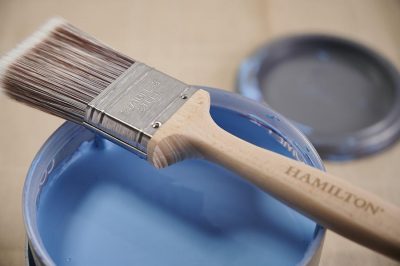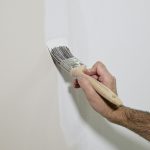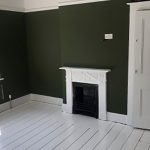Match the brush to the paint
 When it comes to paint formulations, there have been significant changes over the past few years – but have paint brushes kept up with these changes? Do today’s paint formulations require updated, more specific paint applicators, if we are to ensure the best possible results?
When it comes to paint formulations, there have been significant changes over the past few years – but have paint brushes kept up with these changes? Do today’s paint formulations require updated, more specific paint applicators, if we are to ensure the best possible results?
Simon Radestock, a professional decorator with over 25 years’ experience, gave us his perspective on the recent history of paint formulations, how they have changed over time and what it means for paint brush manufacturers.
He has worked with decorating tools manufacturer, Hamilton, on their Decorators’ Panel.
Paints – improving all the time
“Put simply, paints have got better” said Simon.
Initially, forward-thinking paint manufacturers, looking to help protect the environment in line with EU regulations, began producing paint formulations with reduced VOCs.
These early water-based paints – usually vinyl or acrylic – came with great environmental benefits, as well as an improvement in the working conditions of the professional decorator and were a complete departure in terms of how they performed – for example, application and drying time – compared with traditional oil-based paints.
Brushing up
Despite a total change in paint formulations, nothing really changed with the design and manufacture of the paint applicator – the brush.
Simon said, “As a professional decorator, I would have a few favourite bristle brushes, which were carefully worn in. Protected at the end of each day in a metal kettle, brushes were only cleaned once a week.
“Clearly paint is important, but the brush is the tool that allows us to apply the paint and create a fantastic final job. It’s for this reason that professional decorators are so careful with their brushes and are always looking for new brush developments that will allow them to do their job better.”
Synthetic arrives
As acrylic paints took off in the 90s, synthetic brushes appeared, performed well with the new paint formulations and, since they had to be cleaned every day (due to the nature of the paint) they had to be more durable than bristle brushes. So, all good…
Paints moved on
Ever-evolving and striving to improve on the first generation of water-based paints, paint manufacturers delivered innovations yet again. Now water-based polyurethane formulas developed, giving a more controllable, even better quality finish. But synthetic brushes didn’t really alter.
That’s where Hamilton came in. Seeing how the paint market was changing, Hamilton directed considerable research and development resource into creating its own synthetic brushes, aiming to deliver a finish just as good as a bristle brush.
Continuous development
Simon concludes, “Rather than just produce one synthetic brush, Hamilton has been continuously developing their brush offering in line with paint developments.”
Match the brush to the paint







